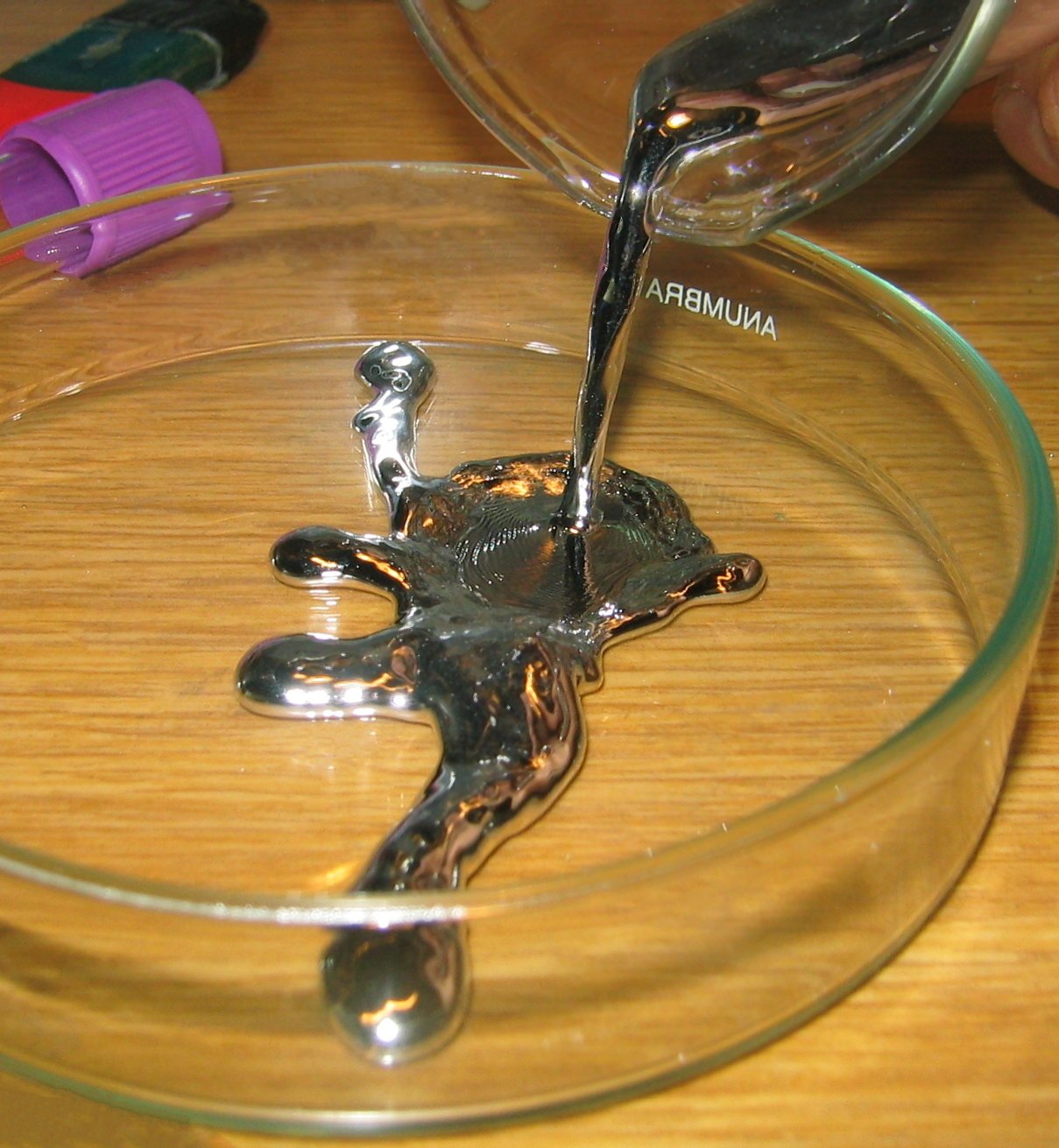9 February 2024
Mercury is a chemical element with atomic number 80 and the symbol Hg. It is the only metallic element that is liquid at standard temperature and pressure. (Elemental bromine is also a liquid, but not a metal.) Mercury has a wide variety of uses, ranging from thermometers to fluorescent lighting and dental amalgams, but many of these uses are being replaced by other substances because of the element’s high toxicity. The chemical symbol for mercury is Hg, from the Latin hydrargyrum, which in turn comes from the Greek ύδράργυρος (hydrargyros), or literally liquid silver.
Mercury has been known since antiquity, but the name does not appear in English until the fourteenth century. The older English name for the metal is quicksilver, which dates to the Old English period. It’s found in a mid tenth-century medical text known as Bald’s Leechbook:
Wiþ magan wærce, rudan sæd & cwic seolfor & eced bergen on neaht nestig. Eft gnid on eced & on wæter polleian sele ðrincan sona Þ[æt] sar toglit.
(For strong pain, taste rue seed & quicksilver & vinegar on a fasting night. Afterward, mix pennyroyal herb into vinegar and into water and give to drink; soon that pain glides away.)
The quick in quicksilver is from the older sense of that word meaning alive, having the properties, especially movement and agility, of a living thing. Since mercury is a liquid at room temperature, the movement of drops of the metal gives it the semblance of a something that is alive.
In antiquity and in the Middle Ages, seven of the elemental metals were each associated with a god and with a planet, with mercury associated, of course, with the messenger god and the planet of the same name. We see this association in a variety of alchemical writings, including Chaucer’s The Canon’s Yeoman’s Tale, one of the earliest appearances of the name mercury in English. Note that Chaucer makes a distinction between the Latinate mercury and the English quicksilver:
I wol yow telle, as was me taught also,
The foure spirites and the bodies sevene,
By ordre, as ofte I herde my lord hem nevene.
The firste spirit quyksilver called is,
The seconde orpyment, the thridde, ywis,
Sal armonyak, and the ferthe brymstoon.
The bodyes sevene eek, lo, hem heere anoon:
Sol gold is, and Luna silver we threpe,
Mars iren, Mercurie quyksilver we clepe,
Saturnus leed, and Juppiter is tyn,
And Venus coper, by my fader kyn!
(I will tell you, as it was taught also to me,
The four spirits and the seven metals,
In the order as I often heard my lord name them.
The first spirit is called quicksilver,
The second orpiment, the third, indeed,
Sal ammoniac, and the fourth brimstone.
The seven metals also, lo, hear them now:
The Sun is gold, and the Moon we assert silver,
Mars iron, Mercury we call quicksilver,
Saturn lead, and Jupiter is tin,
And Venus copper, by my father’s kin!)
Sources:
Chaucer, Geoffrey. “The Canon’s Yeoman’s Tale.” The Canterbury Tales. In Larry D. Benson, ed. The Riverside Chaucer, 8.819–29, 273. Also, with minor variation in wording, at Harvard’s Geoffrey Chaucer Website.
Cockayne, Oswald. Leechdoms, Wortcunning, and Starcraft of Early England, vol. 2 of 3. London: Longmans, et al., 1865, 356–57. London, British Library, Royal 12, D xvii. HathiTrust Digital Archive.
Miśkowiec, Pawel. “Name Game: The Naming History of the Chemcial Elements—Part 1—from Antiquity till the End of 18th Century.” Foundations of Chemistry, 1 November 2022. DOI: 10.1007/s10698-022-09448-5.
Oxford English Dictionary, third edition, September 2001, s.v. mercury, n.; December 2007, quicksilver, n.
Photo credit: Bionerd, 2008. Wikimedia Commons. Licensed under a Creative Commons Attribution 3.0 Unported license.





